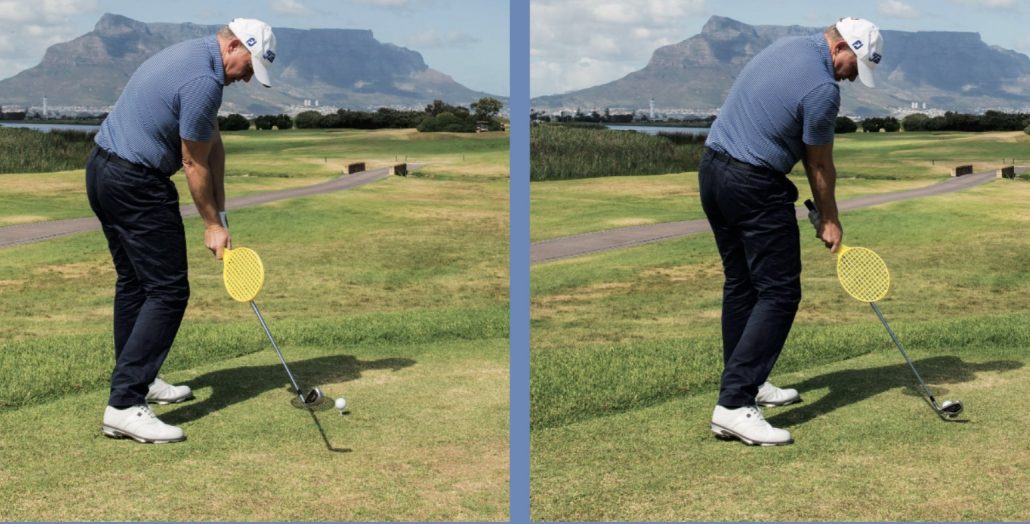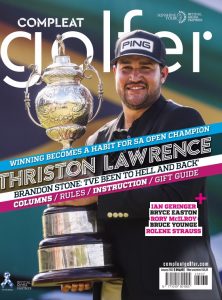Expert instructor GRANT HEPBURN makes use of practical visual aids to help you understand some key golfing concepts so that you can perform better on the course.
Many golfers struggle to shape their shots and curve the golf ball on purpose. The reason for this is they simply haven’t educated their hands and arms to release the club correctly at impact.
This month, I’m using a plastic tennis racket as a visual aid to demonstrate what needs to happen with the clubface to enable you to hit a controlled draw or fade – or put an end to that power slice or big, raking hook you’ve got going.
Even if you’re not a regular tennis player, the chances are you’ve tried it out before and have some level of understanding of how to hit a topspin forehand or a cutspin lob shot. In tennis, these actions quickly become instinctive and before you know it, you are controlling the spin of the tennis ball with your dipping topspin shots or delicate slices.
When it comes to golf, you can use the same principles to manipulate the spin on the ball and hit controlled draws and fades.
The controlled draw
Throughout the following sequences, keep an eye on the tennis racket I have in my hands. I’m holding it at the same angle as the face of my club, so that you can better follow the clubface throughout the swing. In this sequence, you can see how I’ve got myself into a good position at the top of the backswing. My downswing travels slightly inside the target line as I aim to produce an in-to-out golf swing that will encourage the draw shape.
Just before impact you should be able to see that the racket, and therefore the clubface, is in a nice square position. As the tennis racket (and golf club) moves through the ball, I concentrate on hitting a topspin-like shot with the racket, which closes through impact. My hands and forearms are rotating through impact slightly quicker than on a normal swing.
In the front-on view, you can clearly see how the racket, and therefore the clubface, closes through impact in the same way as one would hit a powerful forehand shot down the line in tennis. Again, notice how my forearms cross over from the rotation. The release, combined with the in-to-out swing, helps impart a nice draw on the ball.
The controlled fade
To hit a gentle fade, you need to do pretty much the opposite of what we just did in the draw swing.
In this sequence, notice how my club approaches the ball a little from outside the target line as I aim to produce an out-to-in swing that will me give the best chance of hitting a fade.
It’s important how the racket, and therefore the clubface, is marginally open before impact. It stays this way through and after impact into the followthrough. It’s similar to hitting that slice shot in tennis. My hands do not allow the rotation of the racket, which slows down the rotation of the clubface, holding the club slightly open.
From the face-on view, the first thing you should notice is how the racket, and therefore the clubface, has stayed open. As a result, my arms haven’t crossed over nearly as much as in the draw shot. Combined with the out-to-in swing, this helps impart fade spin on the ball to get the left-to-right shape you’re after.
– This article first appeared in the January 2023 issue of Compleat Golfer magazine.













